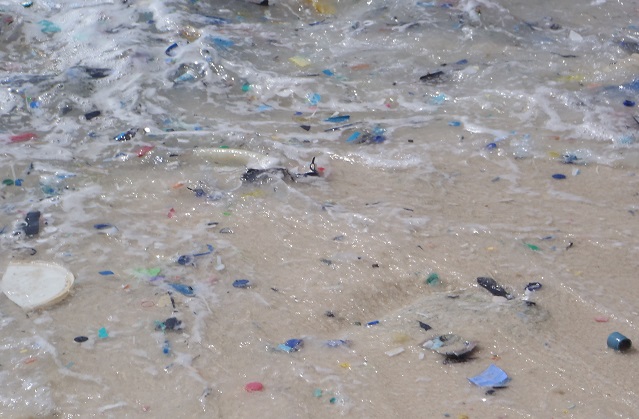99 Percent of Seabirds to Eat Plastic by 2050
Based on an analysis of published studies since the early 1960s, a team of researchers predict that plastic ingestion will affect 99 per cent of the world’s seabird species by 2050.
The researchers from Australian research organization CSIRO and Imperial College London have found that plastic is increasingly common in seabird’s stomachs. In 1960, plastic was found in the stomach of less than five per cent of seabirds, rising to 80 per cent by 2010.
The study, led by Dr Chris Wilcox with co-authors Dr Denise Hardesty and Dr Erik van Sebille, estimate that 90 per cent of all sea birds alive today have eaten plastic of some kind. This includes bags, bottle caps, and plastic fibres from synthetic clothes, which have washed out into the ocean from urban rivers, sewers and waste deposits. Birds mistake the brightly colored items for food, or swallow them by accident, and this causes gut impaction, weight loss and sometimes death.
Dr Denise Hardesty from CSIRO Oceans and Atmosphere says seabirds are excellent indicators of ecosystem health. “Finding such widespread estimates of plastic in seabirds is borne out by some of the fieldwork we’ve carried out where I’ve found nearly 200 pieces of plastic in a single seabird,” she says.
The researchers found plastics will have the greatest impact on wildlife where they gather in the Southern Ocean, in a band around the southern edges of Australia, South Africa and South America.
Dr van Sebille, from the Grantham Institute at Imperial College London, says the plastics have the most devastating impact in the areas where there is the greatest diversity of species. “We are very concerned about species such as penguins and giant albatrosses, which live in these areas," van Sebille says. “While the infamous garbage patches in the middle of the oceans have strikingly high densities of plastic, very few animals live here.”
Hardesty adds there is still the opportunity to change the impact plastic has on seabirds. “Improving waste management can reduce the threat plastic is posing to marine wildlife,” she says. “Even simple measures can make a difference. Efforts to reduce plastics losses into the environment in Europe resulted in measureable changes in plastic in seabird stomachs with less than a decade, which suggests that improvements in basic waste management can reduce plastic in the environment in a really short time.”
“This is a highly important study that demonstrates just how pervasive plastics are in our oceans” said Dr George H. Leonard, Chief Scientist at the US-based Ocean Conservancy. “Hundreds of thousands of volunteers around the world come face-to-face with this problem during annual Coastal Cleanup events. Scientists, the private sector and global citizens working together against the growing onslaught of plastic pollution can reduce plastic inputs to help protect marine biodiversity.”
The work was carried out as part of a national marine debris project supported by CSIRO and Shell’s Social investment program as well as the marine debris working group at the National Center for Ecological Analysis and Synthesis, University of California, Santa Barbara, with support from Ocean Conservancy.

